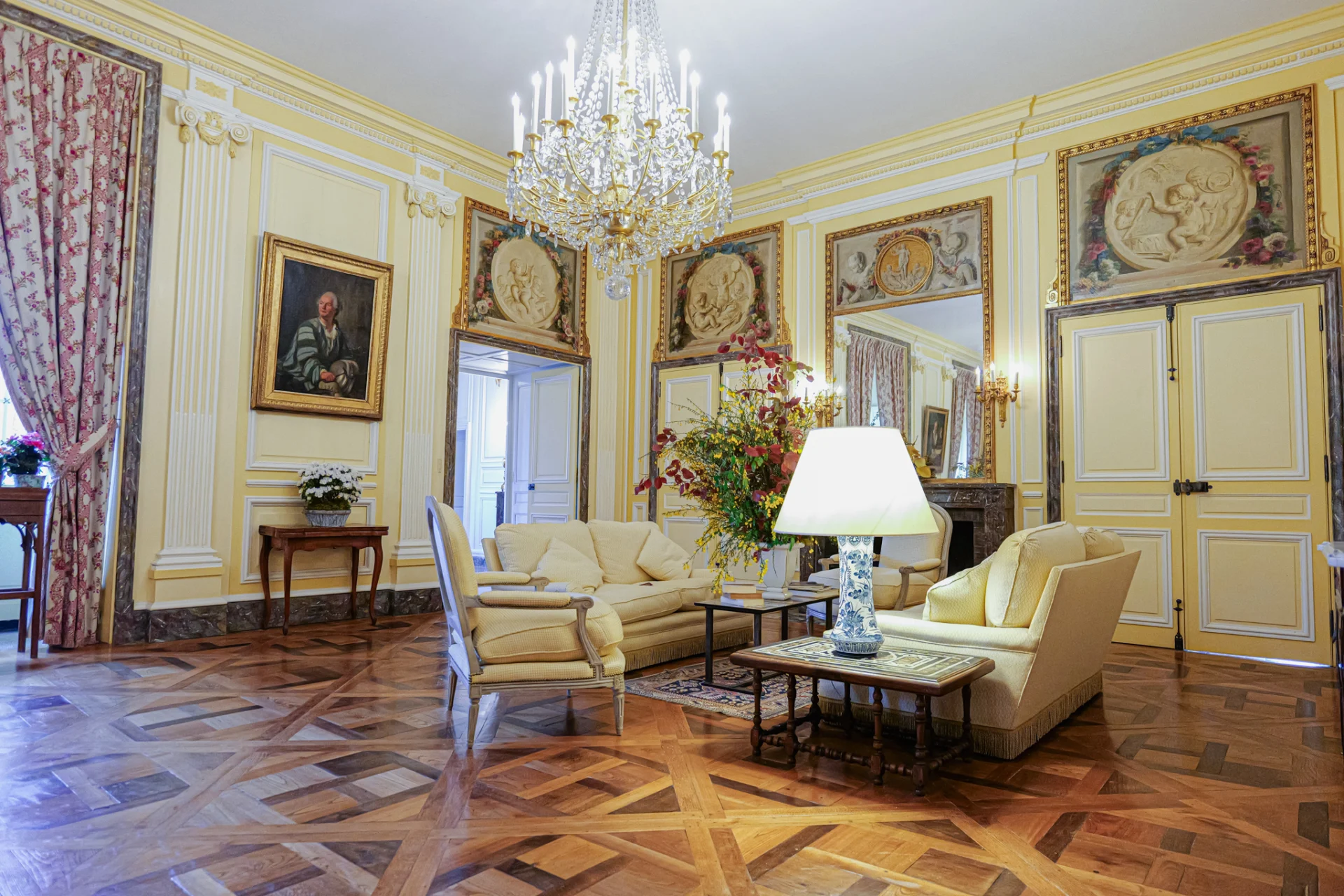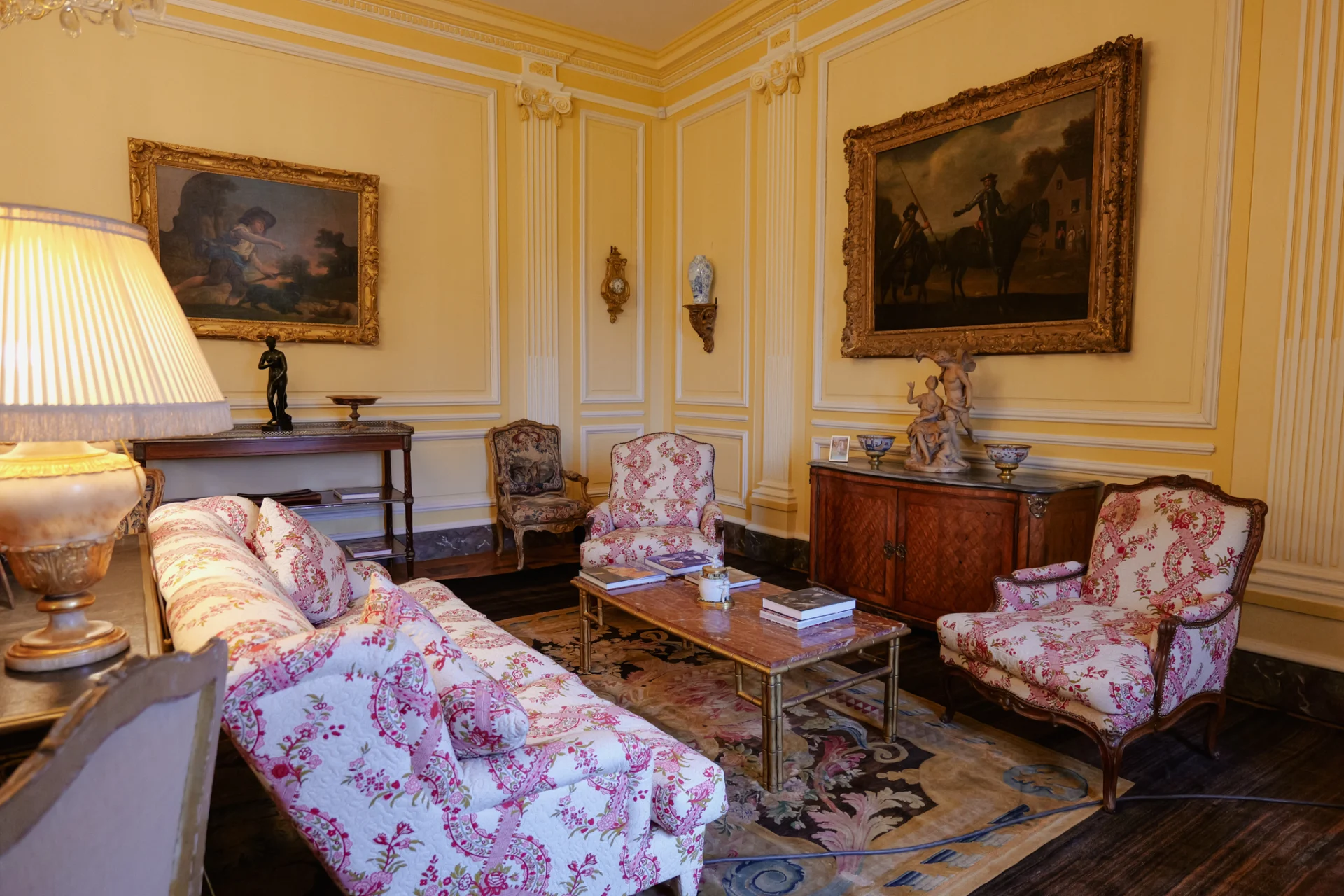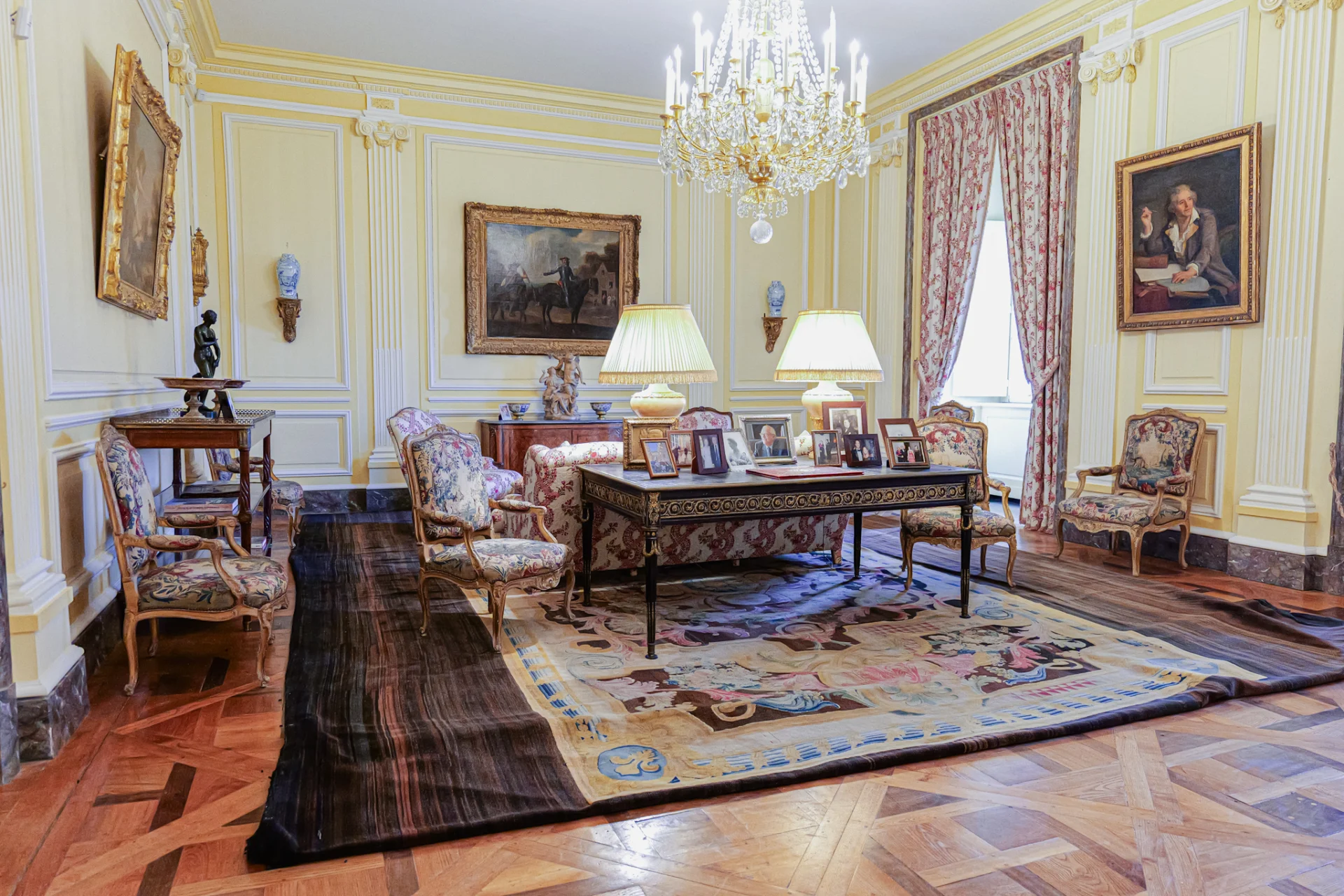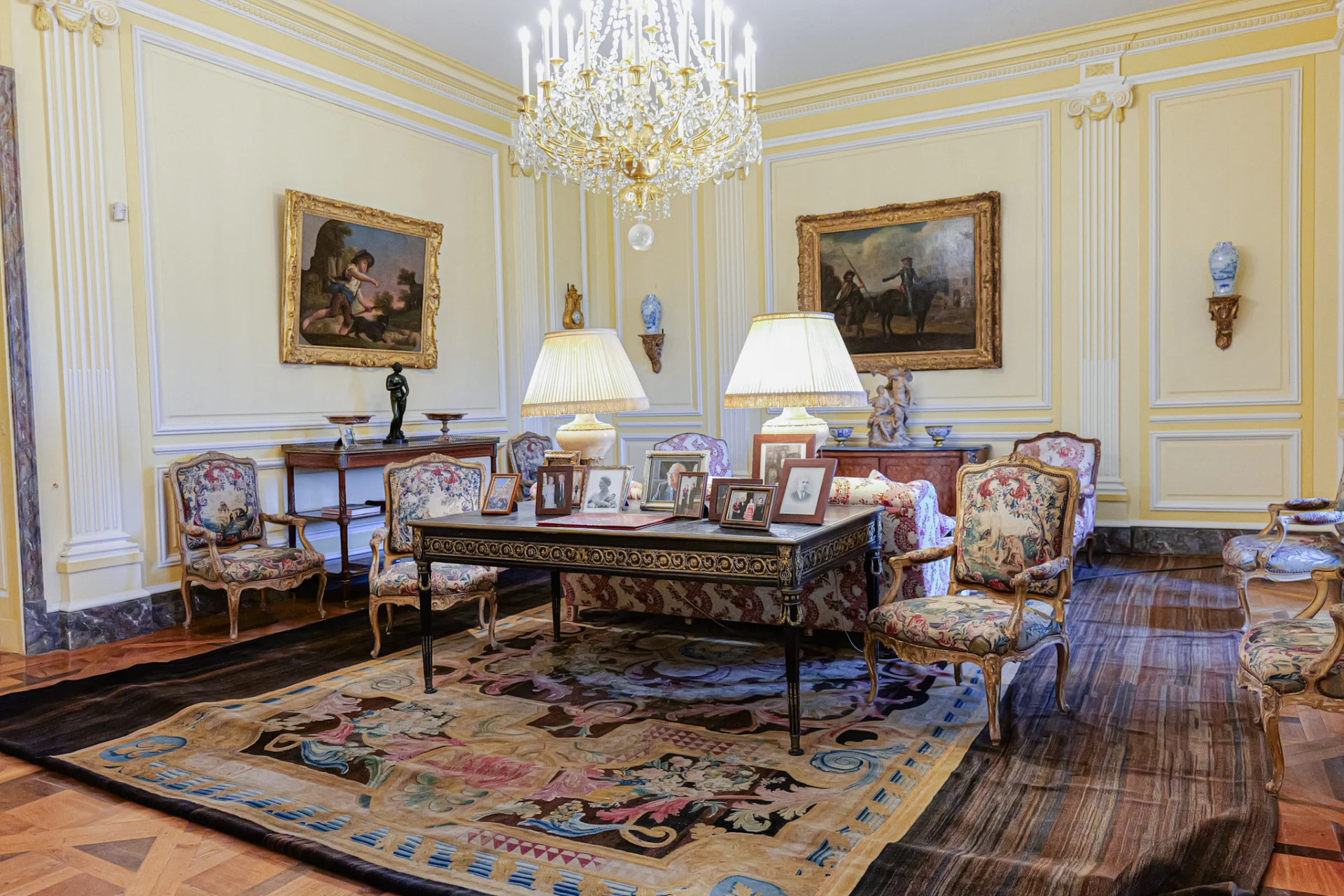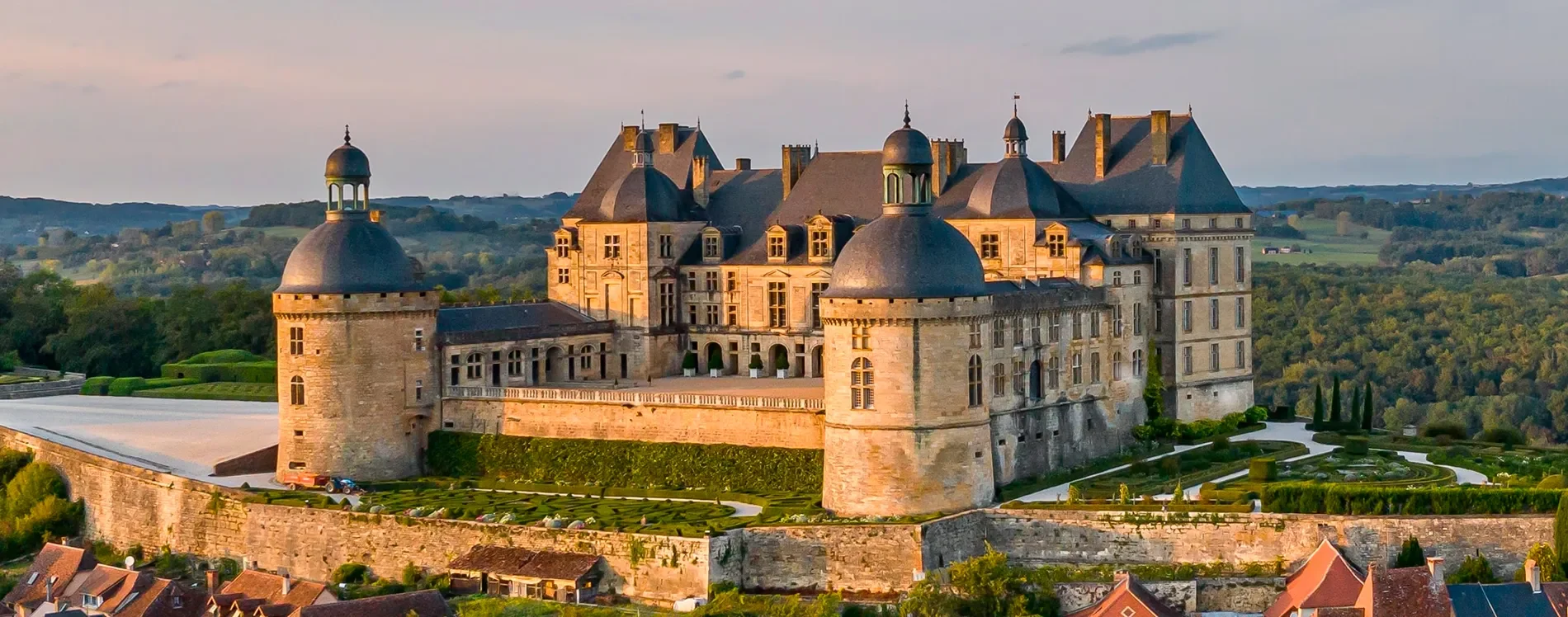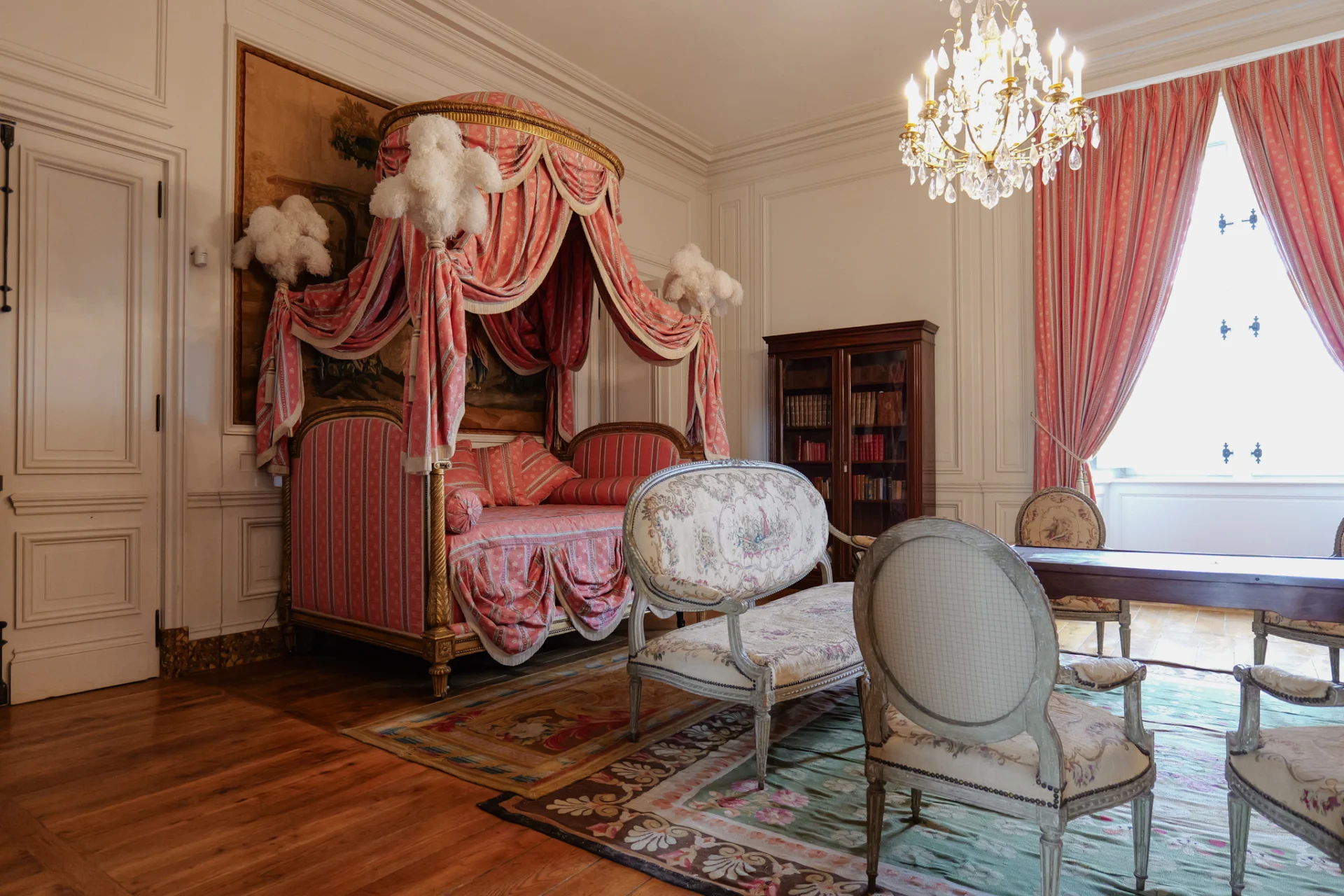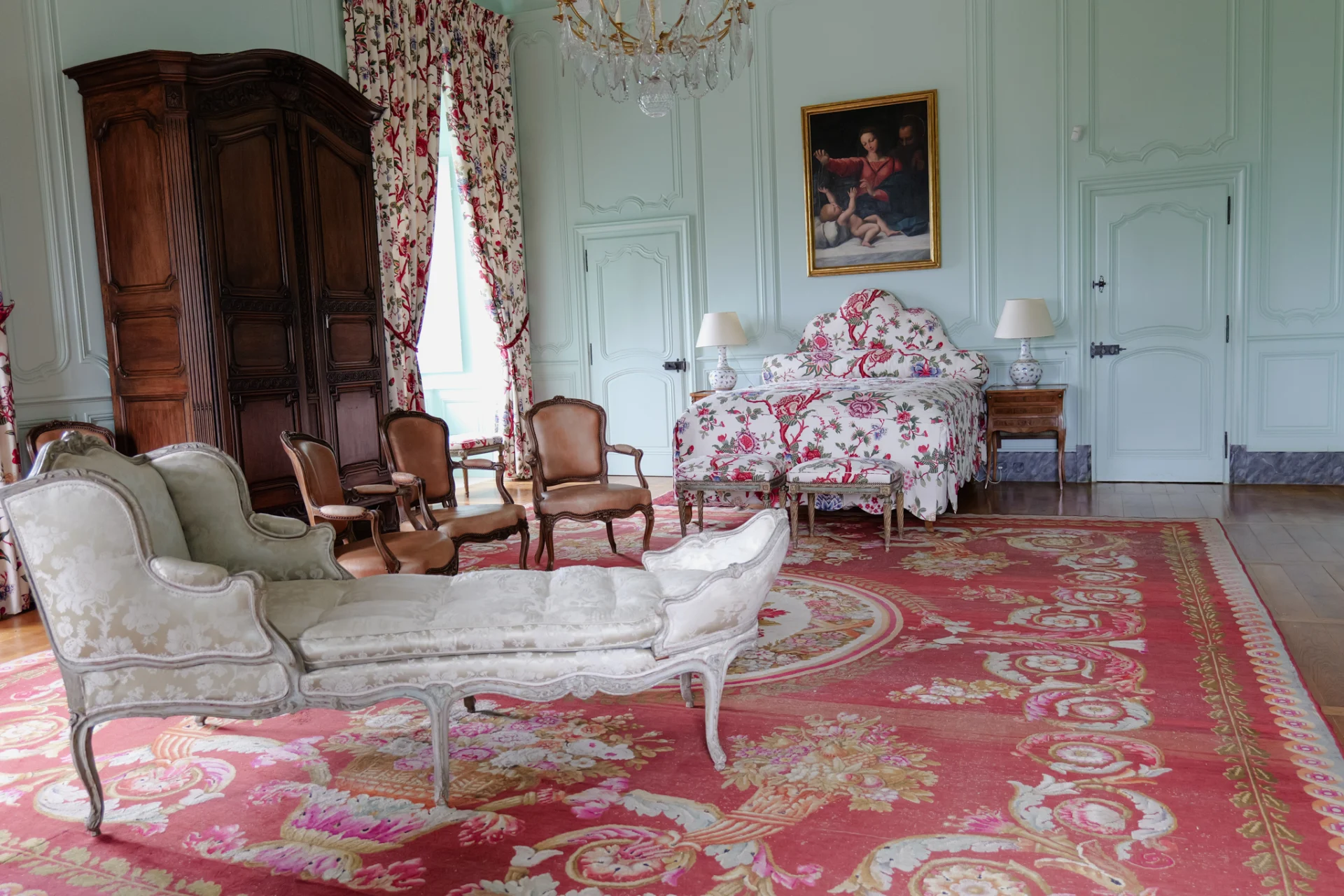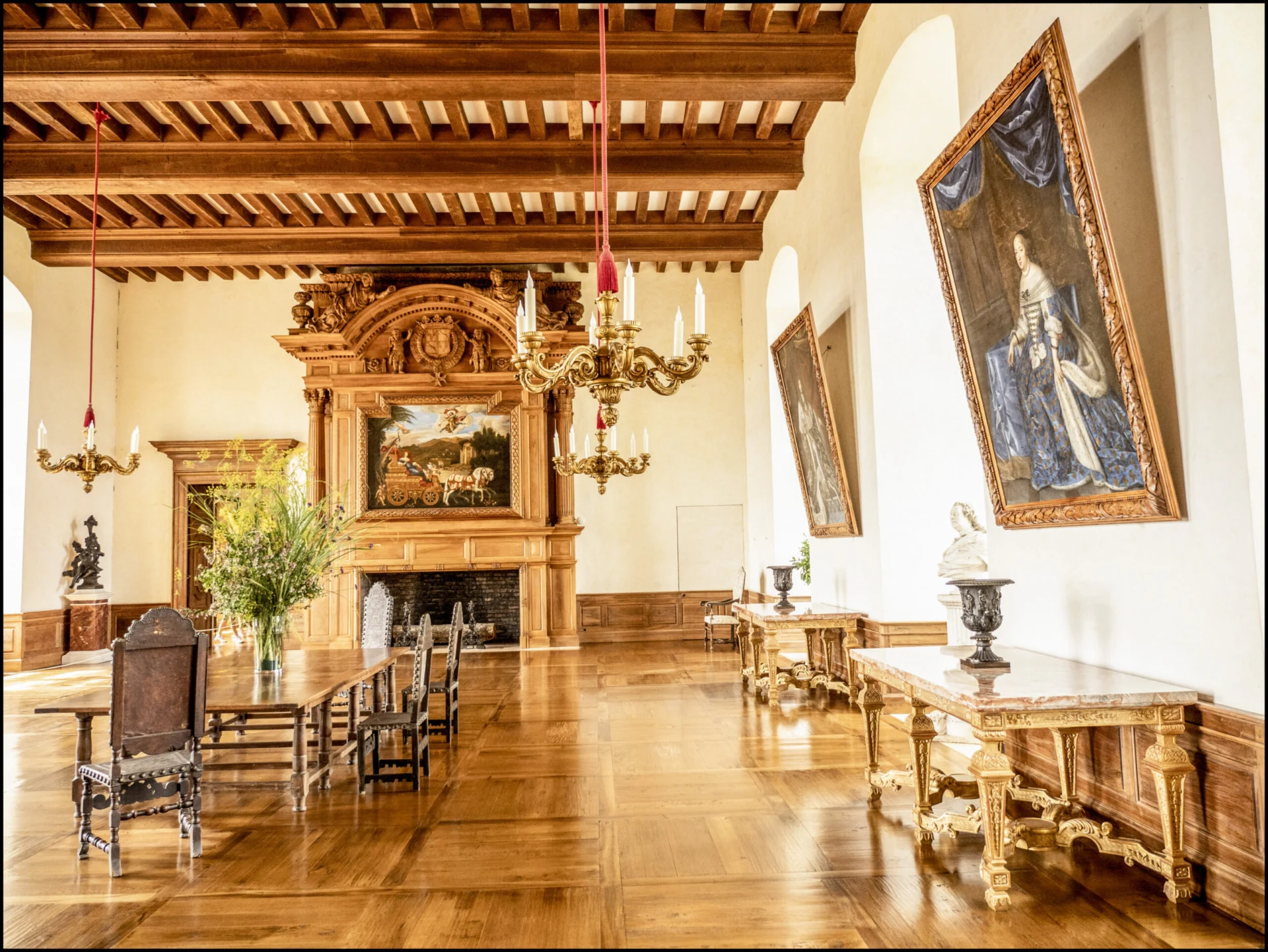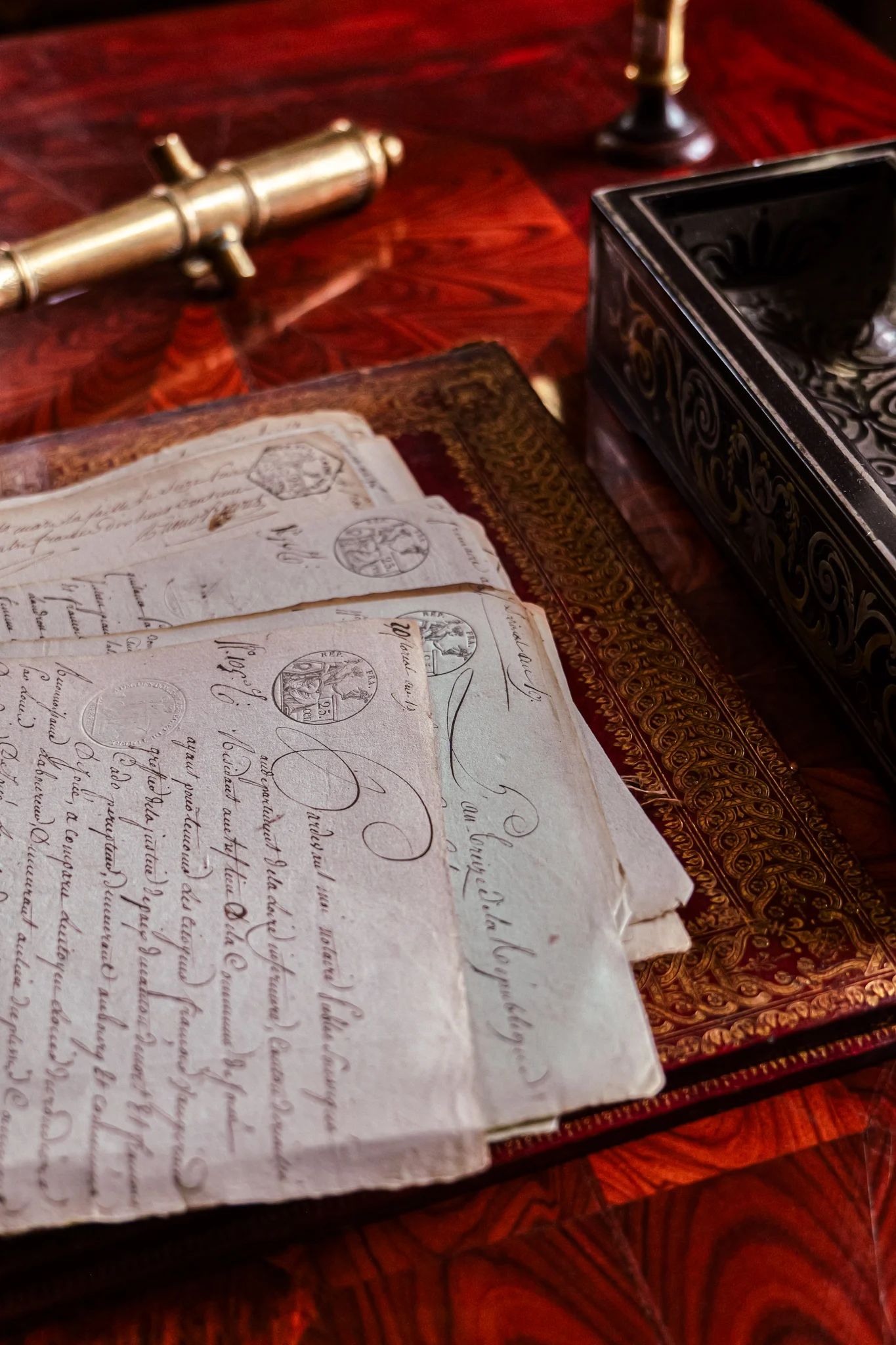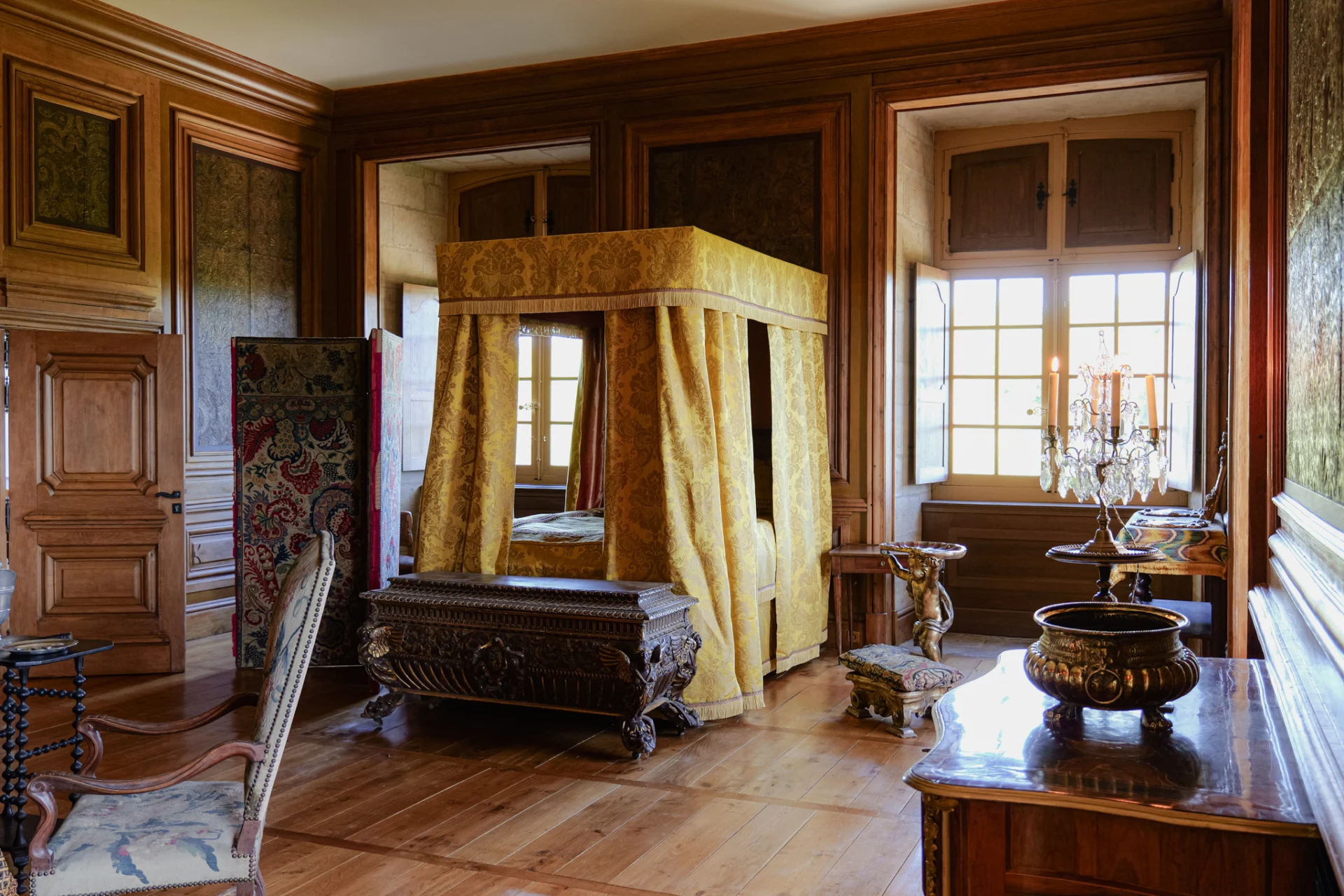Private flats
Private flats
The fables of La Fontaine
The armchairs around the majestic desk come from the Royal Manufactory of Beauvais, founded in 1664 by Colbert. If you look closely, you can see that they illustrate various fables by La Fontaine, including The Fox and the Stork, The Monkey and The Wolf and the Lamb.
The cherubs of Piat Sauvage
The door tops in the grand salon are the work of Piat Sauvage. Piat Sauvage was an 18th-century painter particularly renowned for his trompe-l'œil decorations. Approved by the Royal Academy of Painting and Sculpture in 1781, he was subsequently appointed first painter to King Louis XVI. He painted the famous Portrait of Marie-Antoinette and the ceiling of the chapel at the Château de Saint-Cloud, and took part in the decoration of Versailles, the Petit Trianon and the Châteaux of Fontainebleau and Rambouillet.
The Versailles prosecution service
This is yet another example of the close links between Hautefort and Versailles. As its name suggests, this style of parquet was first used in Versailles to replace marble floors, which were too fragile. It is made up of different pre-assembled square wooden panels, each made up of diagonally-spaced strips of wood that intertwine like a braid. Here at Hautefort, three types of wood intertwine under your feet: red oak, light oak and walnut.
Le Fragonard
Located above a chest of drawers on the left as you enter the grand salon, this painting was acquired by Baroness de Bastard, who had an eye for the great technical mastery demonstrated by the painter, although he had not yet been identified at the time. It turns out that she was right, as an expert appraisal carried out in 2011 confirmed that it was an authentic Fragonard! Here, the French master of the rococo style delivers a genuine technical feat in all its simplicity: a young shepherd followed by his dog, running after his flock.
The captured portrait
Facing you as you enter the grand salon, the portrait of the sculptor Pajou by his son is one of the works from the David-Weill family collection that was seized by the German army in 1940. It was then exhibited at Neuschwanstein Castle, where works were selected for inclusion in Hitler's museum. The painting still bears the German inventory number on the back of its stretcher.
